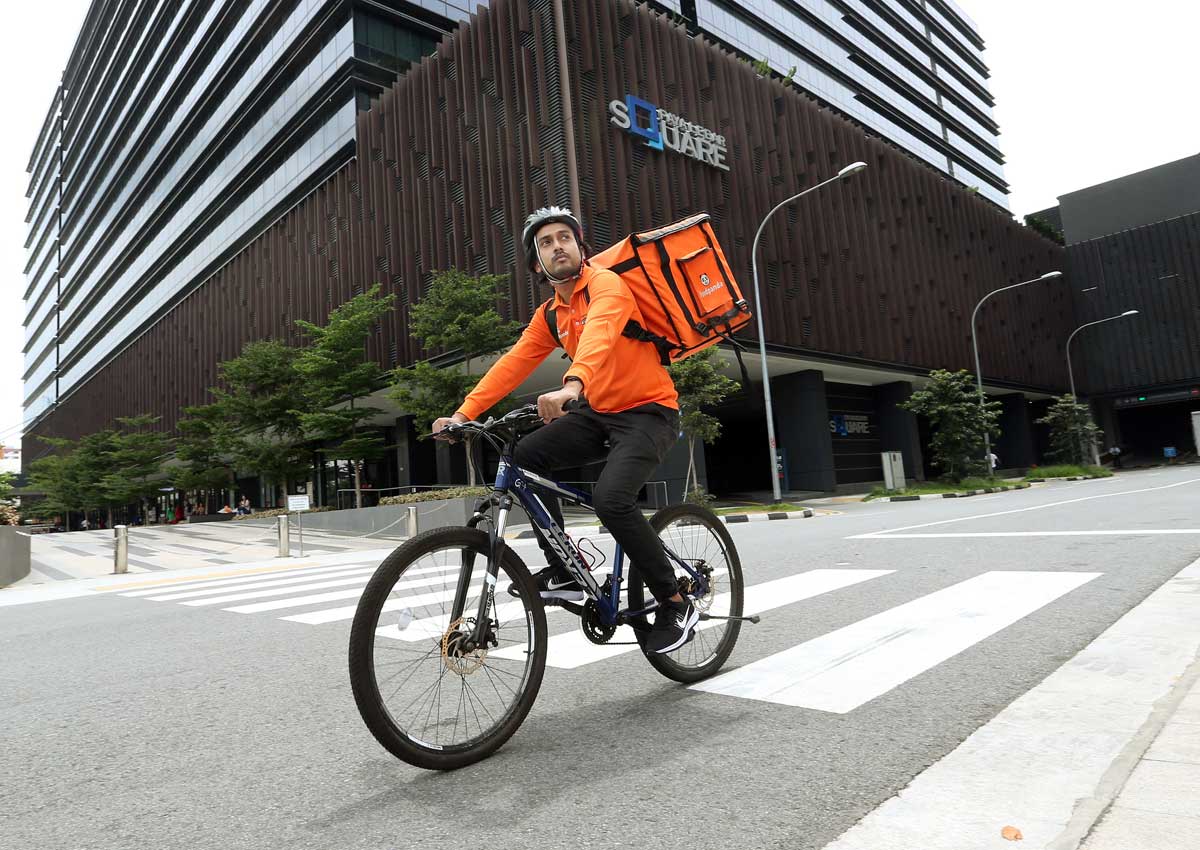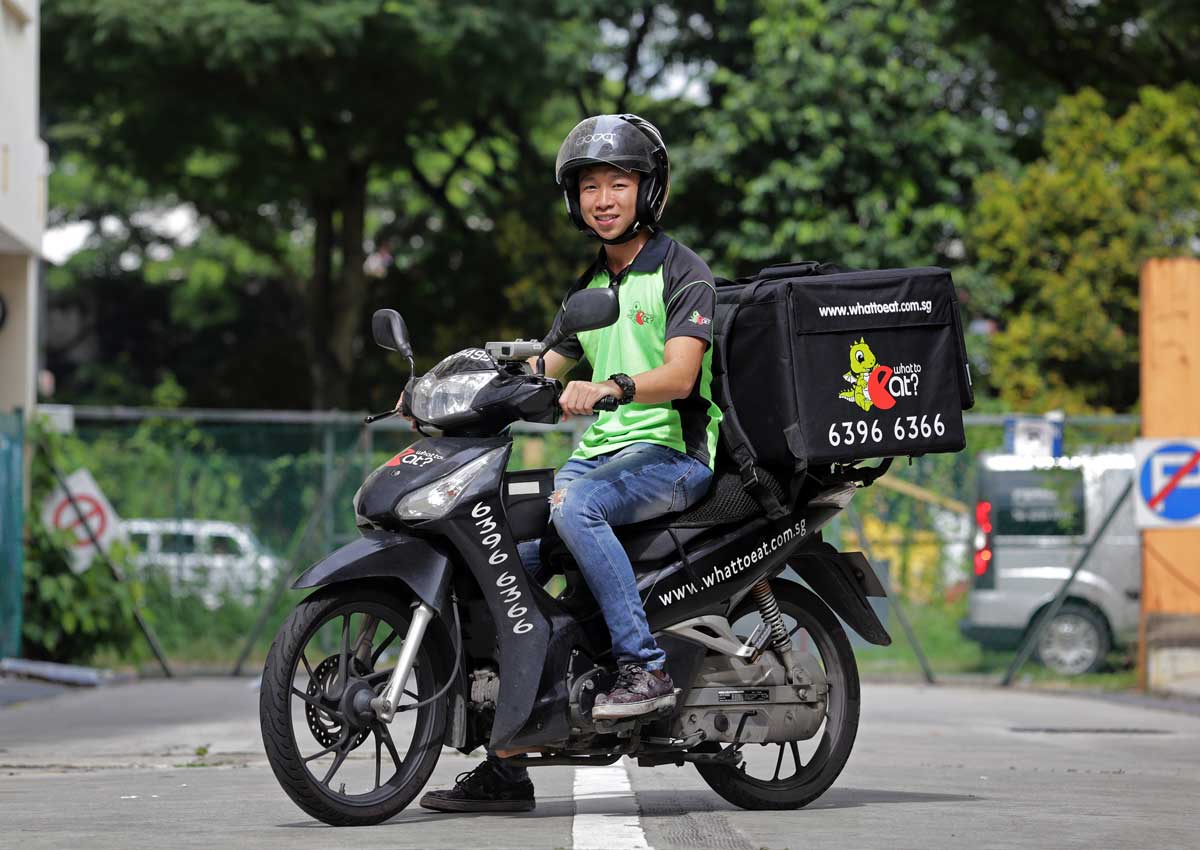Delivery rider Gerry Tan has seen his monthly earnings rise 80 per cent – from $2,000 to $3,600 – since he started his job almost two years ago.
The 25-year-old, who transports everything from steaming plates of pad thai to sandwiches for What To Eat, is not the only one receiving a larger slice of the pie.
As Singaporeans embrace having food delivered to their doorsteps, the demand for delivery staff has soared – and wages for the service have risen with it.
Mr Paul Lim, founder and president of industry body Supply Chain Asia, estimates that earnings have gone up by an average of 50 per cent over the past two years, while the number of food-delivery riders is rising by about 15 per cent a year.
Food-delivery services have emerged as a bright spot in a tepid job market.
According to Manpower Ministry figures, the average gross wage of a delivery rider was $1,914 in June last year.
Firms have also seen their pool of delivery staff grow.
What To Eat has 30 full-time delivery staff and 50 freelancers. Both pools have been growing by about 25 per cent a month over the past year.
A full-time rider’s earnings there have grown by about 40 per cent in the last two years to about $3,500 a month, according to business development director Nikola Rudic.
But a delivery rider’s life is no walk in the park.
The hours are long: Full-timers at What To Eat make about 20 deliveries from 11am to 10.30pm, five days a week, while freelancers work on average about 41/2 hours a day, 21/2 days a week.
“The rate of growth has been much faster because of the increased awareness of different food-delivery options among Singaporeans,” said Mr Rudic.
At Food Panda, one of the biggest players in the market, orders have been increasing by 25 per cent a month this year.
It has seen its delivery fleet surge to 2,500 riders since it started building the fleet in March last year. When it started out in April 2012, restaurants it partnered handled the deliveries.
However, 90 per cent of Food Panda’s delivery crew is made up of part-timers.
With the surge in orders, firms are finding it difficult to hire riders, and struggle to cope during peak periods like Chinese New Year, Mr Lim said.
He added that potential riders generally perceive the job as involving long hours on the road and offering few prospects of skills development or pay rises.
Mr Rudic agreed that it is “very difficult” to hire riders as more firms are competing for a limited supply.
UberEats, which was set up in May, said it had trebled its pool of drivers over the last eight weeks.
Meanwhile, NTUC assistant secretary-general Ang Hin Kee believes firms may turn to technology to meet their needs.
Delivery jobs could be carried out by driverless or autonomous vehicles, for instance.
He suggested that if delivery riders want to boost their pay, they could learn how to run such systems.
And if existing companies do not provide the chance for them to upgrade their skills, they can take up career-conversion programmes.
For Mr Tan, the job and its benefits are satisfactory for now.
He earns a basic salary of $2,000 and gets $7 per delivery for the 101st to 200th delivery he makes each month.
Beyond that, he gets $8 per delivery.
He said: “I find the pay rewarding. As a diploma-holder just out of army, I would expect to earn about $2,100.
I haven’t made plans to leave.”
Bicycles faster than motorbikes for deliveries

Photo: The Straits Times
It is lunchtime in Amoy Street in the Central Business District (CBD) and, just as office workers sit down to eat, a delivery rider hefts a backpack full of food and zooms off.
This is a common sight in the CBD but, these days, the rider might be on a bicycle rather than a motorbike.
Food-delivery firms are turning to bicycles and electric bicycles to make deliveries – which they say are quicker.
Deliveroo announced in August that it would start doing deliveries by bicycle that month – beginning with a fleet of 50 riders serving the River Valley, Tanjong Pagar and City Hall area.
Meanwhile Foodpanda, which has a fleet of 2,500 delivery riders, started bicycle deliveries six months ago.
It now has about 150 cyclists and hopes they will eventually make up over a third of its fleet.
“Cyclists work quite well, especially in the CBD,” said its chief executive Jakob Angele.
“They have more flexibility with parking at malls.
With motorbikes, it’s very restricted. In traffic, cyclists move equally fast or faster.”
The company counts among its 150 cyclists and e-bikers a diverse group of people, including professionals, who are looking for a bit of exercise after work, and students.
Most are in their early 20s.
Hiring a cyclist also costs about 30 per cent less than a motorcycle rider, since the company does not have to pay taxes and fees for motorbikes.
At the moment, Foodpanda’s cyclists mostly cover the CBD area.
Mr Fazli Nasser, 32, says he can deliver about 20 orders by bicycle over the course of a 10-hour shift.
“One thing I like about being a cyclist – you can avoid traffic.
It’s a bit more flexible because you can go on the pavement,” said Mr Fazli, adding that each delivery ranges between 2km and 4km.
“Especially in the central area, there are a lot of one-way roads.
If I use a bicycle, I can use the pavement and go through.”
The company is also looking into using e-scooters, but is holding off for now as legislation governing the use of these personal mobility devices (PMD) is likely to be tabled in Parliament before the end of the year.
National University of Singapore transport researcher Lee Der Horng said more delivery companies will use PMDs as infrastructure for cycling is developed.
“We have been seeing this in Western cities like New York… There, it has already become part of the city.”

This article was first published on Oct 17, 2016.
Get a copy of The Straits Times or go to straitstimes.com for more stories.






